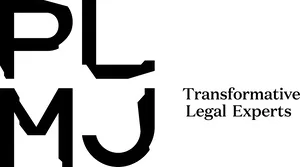Directive (EU) 2023/2413 of the European Parliament and of the Council of 18 October 2023 (Directive), revising Directive (EU) 2018/2001 of the European Parliament and of the Council of 11 December 2018, on the promotion of the use of energy from renewable sources (RED II), was published in the Official Journal of the European Union on 31 October 2023 after a long period of negotiations between Member States. The Directive must be incorporated into the legal systems of each Member State by 21 May 2025. However, some specific measures, such as the acceleration of the authorisation procedure for renewable energy projects, must be implemented by 1 July 2024. The aim of this guide is to summarise the changes that may have the greatest impact on the Portuguese market.
The Directive must be incorporated into the legal systems of each Member State by 21 May 2025. However, some specific measures, such as the acceleration of the authorisation procedure for renewable energy projects, must be implemented by 1 July 2024.
The aim of this guide is to summarise the changes that may have the greatest impact on the Portuguese market.
Greater decarbonisation targets for 2030
The Directive is based on strengthening the targets for increasing the share of renewable energy in final consumption and in the different sub-sectors. The objectives are to ensure:
- That 42.5% of the European Union's gross final consumption comes from renewable energy by 2030, replacing the previous target of 32%, which was already outdated given the EU's strengthened targets since then;
- That renewable fuels of non-biological origin including renewable hydrogen account for 42% of
- That 29% of all final energy consumption in the transport sector comes from renewable sources by 2030, with an increased target for the inclusion of advanced biofuels and biogas.
Indicative targets are also set for increasing the consumption of renewable energy in buildings (49% by 2030) and for renewable energy production from innovative projects (5% of total renewable energy in 2030).
Indicative targets are set for increasing the consumption of renewable energy in buildings and for renewable energy production from innovative projects.
Renewables acceleration areas (go‑to areas)
Finally, as a mechanism to combat lengthy authorisation procedures, the pre-announced renewables acceleration areas or go-to areas are planned, i.e., areas where the authorisation of such projects will be particularly fast. These areas must be defined by 21 February 2026 at the latest.
The go-to areas must be defined according to the following criteria
- They must be sufficiently homogeneous and particularly suitable for the development of renewable energy projects; and
- They must be areas where the environmental impact of the deployment of renewable energy is not significant, in particular excluding areas of the Natura 2000 Network (with the exception of areas already artificially created and built on).
Finally, the pre-announced renewables acceleration areas or go-to areas are planned.
The identification of the go-to areas requires Member States to carry out a comprehensive study of the characteristics and planning of the territory, which in Portugal has already begun with the study carried out by the National Laboratory of Energy and Geology (LNEG) on the Geoportal.
The selection of the go-to areas must be made by a planning instrument subject to a strategic environmental assessment. Projects carried out in these areas will be exempt from any environmental impact assessment or assessment of the effects on the environment, although they may be subject to a case-by-case assessment, unless the Member State justifiably waives this.
The maximum time limit for authorising projects in go-to areas is set at 12 months (half the normal 24-month time limit), except for offshore projects where it is 24 months (against a general time limit of 36 months).
Pre-approved network infrastructure and storage areas
The "go-to areas" model is replicated, with the necessary adaptations, for network infrastructure and stand-alone storage systems, which are essential for the integration of renewables into the electricity system.
This will allow Member States to select corridors and zones for transmission, distribution or storage infrastructure through a planning instrument in order to facilitate the authorisation of projects carried out in these areas.
Multiple use of land for renewable energy
The principle is reaffirmed that the multiple use of areas selected for renewable energy projects should be encouraged and that renewable energy projects should be compatible with the pre-existing uses of these areas.
This requirement is directed at Member States, particularly in their selection of areas for renewable energy acceleration, rather than at developers, and we believe it should apply where compatibility with existing uses is possible.
Retrofitting and co-located storage
Retrofitting and co-located storage will be particularly fast-tracked, subject to the following conditions:
- Their approval should not exceed 6 or 12 months, depending on whether they are inside or outside go-to areas;
- Retrofitting that does not result in an increase in capacity of more than 15 per cent must generally be authorised within 3 months and, in the case of retrofitting within the perimeter of a solar farm, is exempt from environmental and case-bycase assessment;
- The installation of co-located storage systems in man-made structures must be authorised within 3 months.
These measures are not expected to have a significant impact on the Portuguese case as, despite the differences in the specific measures, the existing legislation is already moving in this direction.
One-stop shop and tacit authorisation
Two other provisions have been introduced to simplify the licensing process, but their impact appears to be more apparent than real.
Firstly, Member States are required to provide for tacit consent when it comes to obtaining the various administrative authorisations for projects located in go-to areas. However, the exceptions end up undermining the rule: projects subject to an environmental impact assessment and the final decision of the authorisation procedure are excluded.
Secondly, project promoters are not required to have more than one contact point throughout the licensing process, but, contradictorily, another rule allows for multiple contact points. This casts doubt on the effectiveness of this rule.
Human and technical resources for energy system transformation
Within the limits of the EU's ability to intervene, the Directive addresses two of the biggest challenges to energy transition. These are the insufficient resources of the authorising bodies and the lack of qualified personnel to install new renewable capacity at the legally required rate.
Member States are therefore required to ensure that:
- Their bodies have sufficient resources and qualified staff to ensure the authorisation of the level of new renewable capacity envisaged in their national energy and climate plans; and that
- Rules are put in place to ensure the availability of a sufficient number of trained and qualified installers of renewable energy systems (in particular solar photovoltaic and storage systems), as well as sufficient training programmes for this purpose.
These obligations are programme-based, but Member States that do not take sufficient measures to strengthen the resources of the authorising bodies or training in the field of renewable energy will face the significant consequence of proceedings for noncompliance with European Union law.
Guarantees of origin
The Directive maintains the guarantee of origin as the chosen means of certifying the production of energy from renewable sources, and now extends the scope of its mandatory issuance, at the request of the producer, to renewable hydrogen and other gaseous renewable fuels of non-biological origin. This is already provided for in Portuguese law.
It also stipulates that guarantees of origin may cover fractions smaller than the standardised value of 1 MWh and that guarantees of origin cancelled in favour of consumers of gas or hydrogen networks must comply with the characteristics of that network.
The use of biomass for energy purposes is subject to more stringent restrictions.
Biomass
The use of biomass for energy purposes is subject to more stringent restrictions:
- The explicit inclusion of the principle of cascading the use of biomass, in order to encourage the use of biomass for products with a higher added value and its reuse or recycling, rather than its use for energy production;
- Strengthening the environmental and biodiversity safeguards that must be in place for biomass to be considered renewable and eligible for financial support by avoiding the harvesting of stumps and roots; and
- Requiring all biomass power plants with a thermal capacity of 7.5 MW or more to fully comply with sustainability and emission reduction criteria (as opposed to the 20 MW threshold set previously).
Joint projects by 2030 - Offshore wind
Although RED II already provided a legal framework for joint projects, it now requires Member States to set up at least two joint pilot projects between more than one Member State by 31 December 2025 in order to stimulate cooperation between them. Costs should be shared fairly according to their costs and benefits.
In the case of Portugal, offshore wind technology, for which the country has ambitious targets, is the most obvious candidate for joint initiatives with other Member States.
Renewables power purchase agreements
The Directive reaffirms the objective of encouraging the conclusion of power purchase agreements (PPAs) for green electricity from renewable energy sources and removing the obstacles that still exist to this end, in particular in the case of PPAs with small and medium-sized enterprises and private consumers, as well as cross-border PPAs.
In particular, the Directive suggests that Member States explore ways to reduce the financial risks of PPAs through the use of public credit guarantees.
However, the news at this level is modest as we are waiting for a more comprehensive reform of the European electricity market. This has only recently been agreed at the level of the Council of the European Union and is still awaiting final approval.
Renewables in buildings
Member States' building regulations and codes are expected to include measures to increase the use of renewable energy in buildings.
These measures could include minimum levels of self-consumption of renewable energy, membership of energy communities, local storage, charging of electric vehicles and capacity to provide flexibility services, as well as energy efficiency measures.
Decarbonisation of industry
The Directive states that Member States must endeavour to increase the share of renewable energy sources in the amount of energy used for final energy and non-energy purposes in the industrial sector by an indicative minimum of 1.9% per year in the period up to 2030.
As regards the means to achieve the decarbonisation objectives of industry, priority is given to the electrification of industrial processes, where feasible and cost-effective.
However, recognising that electrification is not the solution for many industries, ambitious targets are set for increasing the use of renewable hydrogen and other renewable fuels of non-biological origin in industry (42% by 2030 and 60% by 2035, with a possible reduction to 20% in certain cases).
There is also the possibility for Member States to establish voluntary labelling schemes for industrial products produced with renewable energy and renewable fuels of nonbiological origin.
Finally, the Commission has one year to develop a global hydrogen import strategy to promote a European hydrogen market.
Decarbonisation of transport and electromobility
The obligations imposed on fuel suppliers to integrate energy from renewable sources into their supply mix are reinforced (the share increases from 14% to 29%), as is the obligation to ensure a specific share for the integration of advanced biofuels and biogas (it increases from 3.5% to 5.5% in the 2030 target).
In order to promote electromobility, Member States are allowed to set up a mechanism to grant credits to economic operators who supply renewable electricity to electric vehicles through public charging points and possibly sell these credits to fuel suppliers in order to achieve the share for the integration of renewable energy sources in their mix.
The implementation of this measure will probably require a revision of the Portuguese legislation on electromobility in order to regulate the supply of green electricity for electromobility (currently possible but not specifically regulated) and the possibility of coupling self-consumption production units to electric vehicle charging points.
There are also plans to allow electric vehicles and small batteries to participate in the different electricity markets.
Ambitious targets are set for increasing the use of renewable hydrogen and other renewable fuels of non-biological origin in industry.
Rules on additionality and on temporal and geographical correlation
As anticipated, the Directive extends the rules for determining the renewable origin of renewable fuels of non-biological origin (e.g., hydrogen produced from electrolysis of renewable electricity), which now only applied to the transport sector, to all sectors.
Thus, the rules laid down in Commission Delegated Regulation (EU) 2023/1184 of 10 February 2023, on additionality, and on temporal and geographical correlation between the production of renewable electricity and the production of hydrogen from it, will now apply, by automatic extension of their objective scope of application, to any end use of hydrogen.
The content of this article is intended to provide a general guide to the subject matter. Specialist advice should be sought about your specific circumstances.


